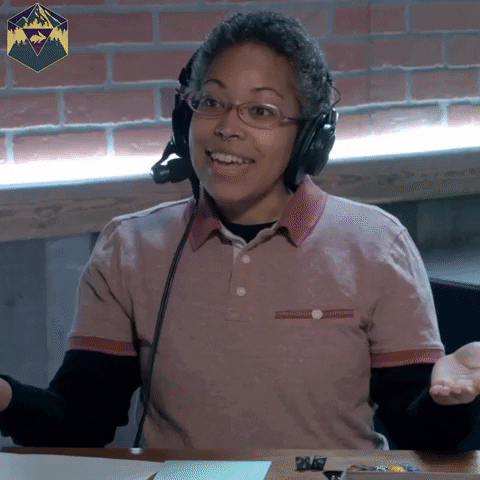INHALE………….. EXHALE……………..

If you don't have the time for a full read, just tap the link to jump to a section.
Sometimes, anxiety can feel incredibly overwhelming. So much so, that it seems like nothing can make it subside. However, these are just feelings, not facts. No matter how overwhelming your anxiety may seem, there are a few simple steps you can take to help diminish your worries and feel in control once again. The best place to start? Breathing techniques.
It may sound simple, but regular breathing techniques have been known to help alleviate anxiety symptoms, making everything feel just a bit more manageable. While there are many different types of breathing techniques for you to practice, we’ve listed our top four favorite breathing techniques to help lessen your worries.
Our 4 Favorite Breathing Techniques
-
Belly Breathing

Abdomen breathing, or more affectionately known as belly breathing, is the technique of learning to breathe deeply from your diaphragm, making it easier for the other functions of your body to do the same.
The more stressed out you are, the more your body tenses up. The tenser that you are, the more shallow your breaths become; shallow breaths can exacerbate your anxiety further as your body is struggling to get the oxygen that it needs.
This is why it’s crucial to take the time to consciously focus your breaths to come from deep within your belly, helping to relieve this internal tension and allow your body the flow of air it requires. When your brain receives more oxygen, it is able to release more endorphins, allowing waves of happiness and calm that shallow breathing could never.
To practice this breathing technique, you’ll want to sit or lie down, placing one hand on your chest and the other directly above your belly button. Practice drawing air from deep within your stomach, and not your chest.
You should feel your stomach rising while your chest stays stable. Exhale through your mouth and utilize your abs to push out the rest of the air during exhalation. Strive to do at least ten belly breaths during this exercise, repeating once or twice per day if necessary.
-
Breath Focus

This type of breathing is designed to help you learn to take deep, slow breaths, creating the calm atmosphere you need. Make sure you’re somewhere peaceful and comfortable, and start paying attention to how you breathe normally.
Are you tense in certain places? How do your lungs, back, and chest feel when you breathe? Then, take a long, deep breath in through your nose, really focusing on the way your lungs fill and your upper body expands. Almost immediately, you’ll be able to notice the difference in the way your body feels.
Exhale whenever and however feels most comfortable for your body. Pay close attention to how your exhale feels in your lungs, mouth, and belly. Let yourself exhale audibly, really focusing on the sounds you create.
Once you’re comfortable focusing on your body’s movement, you can start to actually visualize the air filling your lungs and then escaping. The air that you let in is positive and soothing, while your exhales can be filled with the anxiety and tension you’re letting go.
Continue doing this for twenty minutes, being as focused as possible on every deep, long breath you take, and absolutely nothing else.
If you find it challenging to focus long enough to complete the exercise, then consider hopping in a pool. If you have ever watched swimmers breathe, this is a great example of breath focus. They must control their breathing so that they exhale into the water and inhale between strokes. If you can think of breathing in this fashion, it may help you work through this exercise.
-
Yogic Breathing

Yogic breathing, or pranayama, is one of the most vital components in proper yogi practices. It is often referred to as ‘breath control,’ and is designed to help deepen your breathing abilities while being more mindful about your body and the way that it functions.
There are various yogic flows that incorporate these breathing exercises, giving you both your mind and body a chance for relaxation and calm senses. Each pranayama is unique, every exercise focusing on different parts of the body, as well as the lungs. Keep in mind that this will take a bit of practice, but it reaps various benefits that make a little practice totally worth it.
With so many different types of yogic breathing flows, you can experiment with different techniques each day until you find the ones that center you the way you like. From basic breath awareness techniques to breath retention and alternate nostril breathing, yogic breathing has an exercise for everyone and at any anxiety level.
-
Lion’s Breath

If all of these gentle breathing exercises just aren’t reducing your anxiety the way you’re hoping, you can always try forceful breathing techniques like Lion’s Breath. This technique involves you sitting cross-legged or in a kneeling position with your feet underneath yourself.
Put your hands on your knees, inhale through your nose, and then open your mouth as wide as a lion’s. Exhale as though you’re letting out a forceful yawn, making noise if you have to.
When you inhale again, let your face muscles relax as much as possible. Do this five or six times, or until you’re feeling a bit more balanced. While there’s nothing wrong with traditional, silent breathing exercises, this one is ideal for blowing off a little bit of steam and releasing anxieties in a way that feels more forceful, like you’re finally in control.
You should be able to completely rid your body of any negative emotion, vibes, or whatever else may be holding you back. With this Lion’s Breath exercise, force is the name of the game, and, sometimes, it’s exactly what we need.
Breathing Better

It may seem simple, but practicing breathing better through breathing techniques can actually do wonders for your stress and anxiety levels. With anxiety being something that’s so tricky to manage, and so different for every person, finding a simplistic, natural approach to relaxation is practically life-changing.
Though these breathing techniques can’t cure or treat anything medical, they sure can make life feel a whole lot more bearable. With extra practice and dedication, you’ll be breathing better (and more calmly) than you ever have before. Start with a few simple, deep inhales, exhale your worries, and let your body take care of the rest. We promise, you’re stronger than you think.

